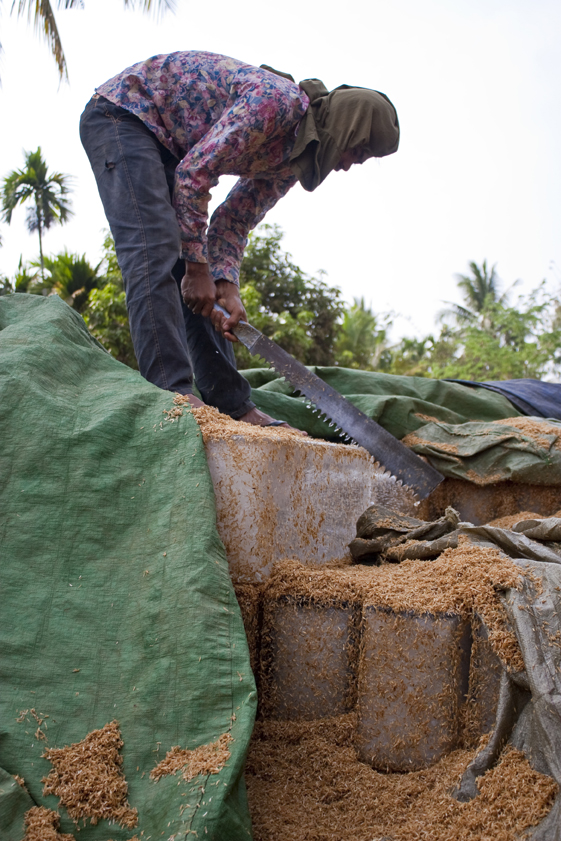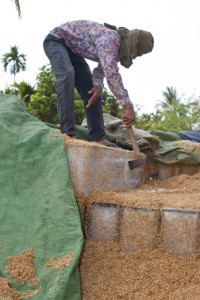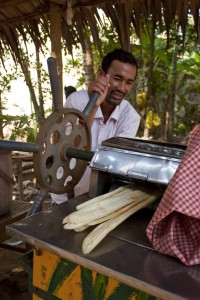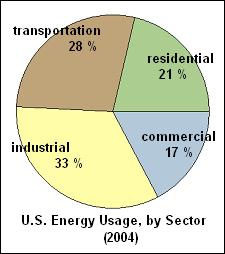Check this out. This is how ice is transported around Cambodia. Blocks of it are stacked on the back of a truck, then covered by rice husks and a tarp. The truck drives a set route and small sections are sawed off as each vendor flags down this truck to buy ice from them. One big block is about 7000 Riel or $1.75. It lasts the whole day for a small vendor like the ones selling sugar cane juice. More photos on Keith Kelly’s flickr.
This is ice being transported within the city. The horses are tiny, even for someone short like me!








